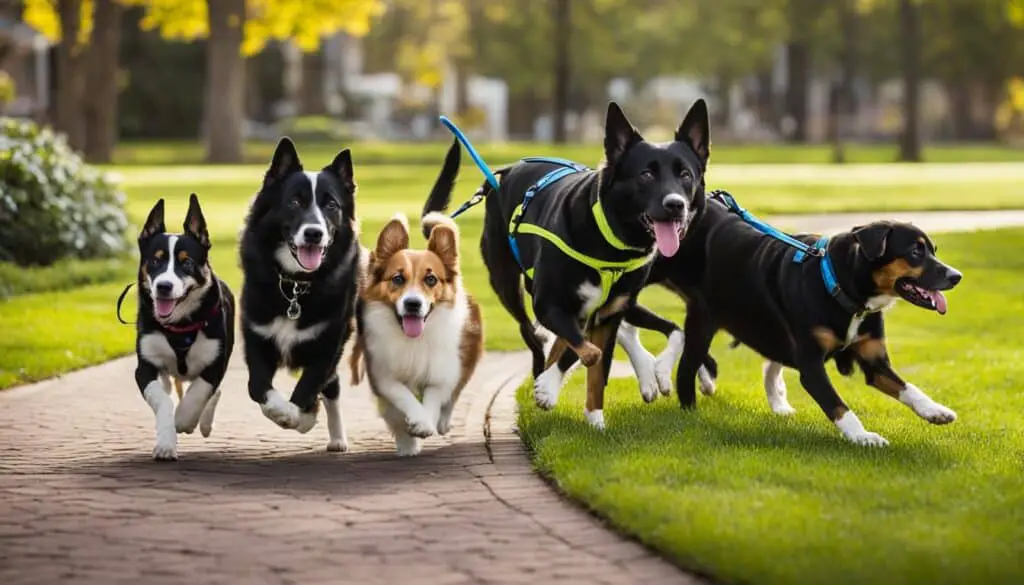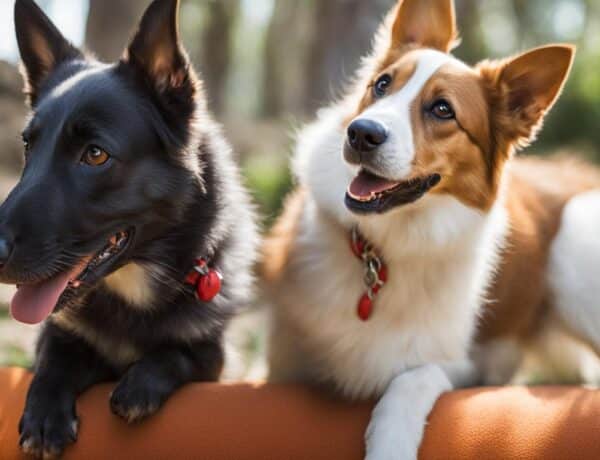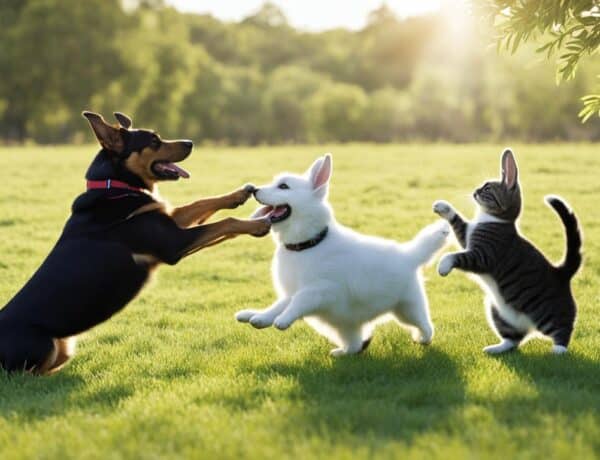Bringing a new small pet into your home is an exciting time, but it can also be a period of adjustment for both you and your furry companion. Training your small pet to adapt to their new environment requires patience, preparation, and consistency.
It’s important to understand that the process of acclimating to a new home and surroundings takes time, and each pet will have their own unique timeline for adaptation. By following a few key steps, you can help your small pet feel at ease and confident in their new environment.
Firstly, gathering all necessary supplies in advance can ensure a smooth transition. Items such as a collar, leash, bowls, bed, and toys should be readily available when your small pet arrives. Consider creating a safe space for them, whether it’s a crate or enclosed playpen, where they can feel secure and comfortable.
Introducing your small pet to their new food gradually and establishing a feeding routine is crucial. Additionally, ensure that all pets in the household, including existing ones, are healthy and up to date on vaccinations before bringing a new pet home.
When it comes to establishing a routine, communication and consistency are key. Determine a care regimen that includes walking schedules, feeding times, and playtime for the pet. Planning for the pet’s arrival during a time when you can spend quality time together and establish a routine can greatly assist in the adjustment process.
It’s also important to consider the mental stimulation of your small pet. Leaving enrichment items such as stuffed toys or puzzle feeders can help prevent separation anxiety when you’re away and keep your small pet engaged.
Lastly, house-training and ensuring the overall health of your small pet are essential. Assume that the new pet is not yet house-trained and be prepared to work on a consistent routine. Regular potty breaks and gradually increasing the pet’s time outside will aid in the process. Scheduling a veterinarian check-up and vaccinations will help ensure the pet’s well-being.
Adapting training to new environments for small pets is a gradual process that requires patience, consistency, and a deep understanding of your pet’s needs. By following these guidelines, you can help your small pet feel safe and comfortable in their new home, and build a strong foundation for a happy life together.
Key Takeaways:
- Preparing the necessary supplies in advance can ease the transition for your small pet.
- Establishing a routine and gradually introducing the new environment helps small pets adapt.
- House-training and ensuring the overall health of your small pet are essential during the adjustment period.
- The 3-3-3 rule for newly adopted dogs emphasizes patience and consistency for a successful transition.
- Remember, each pet is unique, and the adjustment period may vary.
Preparing your Home and Supplies for a New Small Pet
When bringing a new small pet into your home, it’s essential to prepare the necessary supplies in advance. This ensures a smooth transition and helps your pet feel comfortable and secure in their new environment.
Here are some key steps to take when preparing your home and supplies for your new furry friend:
- Gather the essentials: Purchase all the basic supplies your pet will need, such as a collar, leash, bowls, bed, and toys. Having these items ready beforehand will make the first few days at home much easier for both you and your pet.
- Consider a crate or playpen: A crate or enclosed playpen can provide a safe and cozy space for your pet, especially during the initial adjustment period. It creates a designated area where they can relax and feel secure.
- Introduce new food gradually: If you’re planning to switch your pet’s diet, do it gradually to avoid digestive issues. Mix their existing food with the new food in increasing proportions over a few days until the transition is complete.
- Prioritize health: Before bringing a new pet into your home, ensure that all existing pets are healthy and up to date on vaccinations. This helps prevent the spread of diseases and creates a safer environment for everyone.
By following these preparation steps, you’ll be well-equipped to welcome your new small pet into your home. Taking the time to gather supplies and create a suitable environment sets the stage for a positive and successful transition.
Establishing a Routine and Introducing the New Environment
To ensure a smooth transition for your new small pet, it is essential to establish a routine and gradually introduce them to their new environment. By following these steps, you can help your pet adapt and thrive in their new home.
Determine a Care Regimen
Creating a care regimen in collaboration with all household members is crucial for providing consistency and structure for your pet. Discuss and agree upon walking schedules, feeding times, and other essential routines to ensure your pet’s needs are met.
Plan for Quality Time and Routine Establishment
Plan for your new pet’s arrival during a time when you can dedicate quality time to bond and establish a routine. This period is vital for building trust and familiarity with the new environment. Take the time to introduce them to their sleeping area, feeding station, and other key locations within your home.
Prevent Separation Anxiety with Enrichment Items
Leaving behind enrichment items, such as stuffed toys or puzzle feeders, can help alleviate separation anxiety when you are away. These items provide mental stimulation and keep your pet engaged, reducing stress and promoting a sense of security.
Gradual Introduction to New Environments
Exposing your pet to new environments should be done gradually to avoid overwhelming them. Start with one room and gradually expand their exploration area as they become more comfortable. This approach helps your pet feel safe and confident in their new surroundings.
| Routine Tips for Introducing a Small Pet to a New Environment |
|---|
| Establish consistent feeding times. |
| Keep a regular walking schedule. |
| Introduce one new environment at a time. |
| Use enrichment toys to prevent separation anxiety. |
House-training and Health Considerations
When bringing a new pet into your home, it’s important to consider house-training and health considerations. Since it’s safe to assume that the new pet is not yet house-trained, the first step is to establish a consistent routine.
Take the pet for regular potty breaks, gradually increasing their time outside. This will help them become familiar with the outdoor environment and reinforce good bathroom habits.
Aside from house-training, ensuring the pet’s overall health is crucial. Schedule a veterinarian check-up to address any immediate health concerns and receive guidance on vaccinations and preventative care. This will help keep the pet in optimal condition and prevent the onset of any potential health issues.
If the pet has not already been spayed or neutered by the shelter or breeder, it is worth considering. Spaying or neutering helps prevent unwanted litters and provides several health benefits for the pet, such as reducing the risk of certain cancers and behavioral problems.
“Establishing a consistent routine for house-training and prioritizing the pet’s health through veterinary care are fundamental steps in setting your new pet up for a happy and healthy life.”
By focusing on house-training and health considerations, you are setting the foundation for a positive and well-adjusted pet. Remember, patience and consistency are key during this process.
| House-training and Health Considerations |
|---|
| 1. Establish a consistent routine for house-training |
| 2. Take the pet for regular potty breaks and gradually increase outdoor time |
| 3. Schedule a veterinarian check-up for overall health assessment |
| 4. Consider spaying or neutering if not done already |
The Importance of the 3-3-3 Rule for Newly Adopted Dogs
When it comes to adopting a new dog, the first few weeks and months are crucial for building trust, establishing routines, and setting the foundation for a happy life together. That’s where the 3-3-3 rule comes in. This rule emphasizes the importance of patience, consistency, and gradual introductions during the initial three days, three weeks, and three months after adoption.
During the first three days, it’s essential to provide your newly adopted dog with a calm and secure environment. Let them adjust to their new surroundings at their own pace. Keep interactions minimal and allow them to explore and get comfortable in their new space. Provide a designated area for them to retreat to, such as a cozy bed or crate.
Remember, each dog has its own unique personality and past experiences that may affect their adjustment. Patience and understanding are key during this initial period.
After the first few days, the next three weeks are crucial for establishing routines and building trust. Stick to consistent feeding schedules, regular exercise routines, and potty breaks. Gradually introduce them to different areas of your home and slowly expose them to new experiences, people, and other animals. Use positive reinforcement and rewards to encourage good behavior and reinforce their understanding of boundaries.
Throughout the first three months, continue to provide support, guidance, and consistency. Help your dog develop confidence by gradually exposing them to new environments, such as parks or busy streets. Enroll them in training classes to further strengthen their obedience and socialization skills. Remember to celebrate their progress and be patient with any setbacks that may arise.
Key Takeaways:
- Follow the 3-3-3 rule after adopting a new dog for a smooth transition.
- Give your dog time to adjust during the first three days by providing a calm environment and allowing them to explore at their own pace.
- Establish routines and build trust during the three-week mark by maintaining consistent schedules and gradually introducing them to new experiences.
- Continue to provide support, guidance, and consistency during the first three months to help your dog thrive in their new home.
The 3-3-3 rule is an invaluable guideline for newly adopted dogs, helping them feel secure, loved, and confident in their new home. By embracing patience, consistency, and positive reinforcement, you’re setting the stage for a rewarding and harmonious companionship with your furry friend.
Conclusion
Training small pets to adapt to new environments is a process that requires careful preparation, patience, and consistent effort. When bringing a small pet into a new home, it’s important to establish a routine and gradually introduce them to their surroundings.
By providing positive reinforcement and following guidelines such as the 3-3-3 rule for newly adopted dogs, pet owners can help ensure a successful transition and a harmonious life together. This rule emphasizes the importance of patience and consistency during the first three days, three weeks, and three months after adoption.
It’s crucial to remember that each pet is unique, and the adjustment period may vary. Some small pets may adapt quickly to new environments, while others may take more time. By remaining attentive, understanding, and responsive to their needs, pet owners can create a supportive environment that promotes training and overall well-being for their beloved companions.
FAQ
How long does it take for a pet and owner to adjust to each other and a new home environment?
It can take time for both pet owners and their small pets to adjust to each other and the new home environment.
What are some key factors to consider when bringing a small pet into a new environment?
Preparation and patience are key when bringing a small pet into a new environment. Gathering necessary supplies and establishing a routine can help ease the transition.
What supplies are essential to have when bringing home a new small pet?
It is important to prepare all necessary supplies in advance, including a collar, leash, bowls, bed, and toys. Consider purchasing a crate or enclosed playpen for the pet’s safety and comfort.
How can I introduce my new pet to their new food and establish a feeding routine?
Gradually introduce the pet to their new food and establish a feeding routine. It is important to ensure that all pets in the household, including existing ones, are healthy and up to date on vaccinations before bringing in a new pet.
What can I do to ensure the health and well-being of my new small pet during the adjustment period?
Determine a care regimen with all household members, including walking schedules and feeding times. Plan for the pet’s arrival during a time when you can spend quality time together and establish a routine. Consider leaving enrichment items, such as stuffed toys or puzzle feeders, to prevent separation anxiety when you’re away.
How should I approach house-training my new small pet?
Assume the new pet is not yet house-trained and work on a consistent routine. Take the pet for regular potty breaks and gradually increase their time outside. Ensure the pet’s overall health by scheduling a veterinarian check-up and vaccinations. Consider spaying or neutering if not already done by the shelter or breeder.
What is the 3-3-3 rule and why is it important for newly adopted dogs?
The 3-3-3 rule emphasizes the importance of patience and consistency when adopting a new dog. The rule encompasses the first three days, three weeks, and three months after adoption. During these periods, gradual introductions, maintaining routines, and positive reinforcement are essential. The 3-3-3 rule helps ensure a smooth transition and build a strong foundation for a happy life with the new dog.
What are some general tips for training a small pet to adapt to new environments?
Training a small pet to adapt to new environments requires preparation, patience, and consistency. It is important to establish a routine, introduce the pet to their new environment gradually, and provide positive reinforcement. Following guidelines such as the 3-3-3 rule for newly adopted dogs can help ensure a successful transition and a happy life together.







No Comments